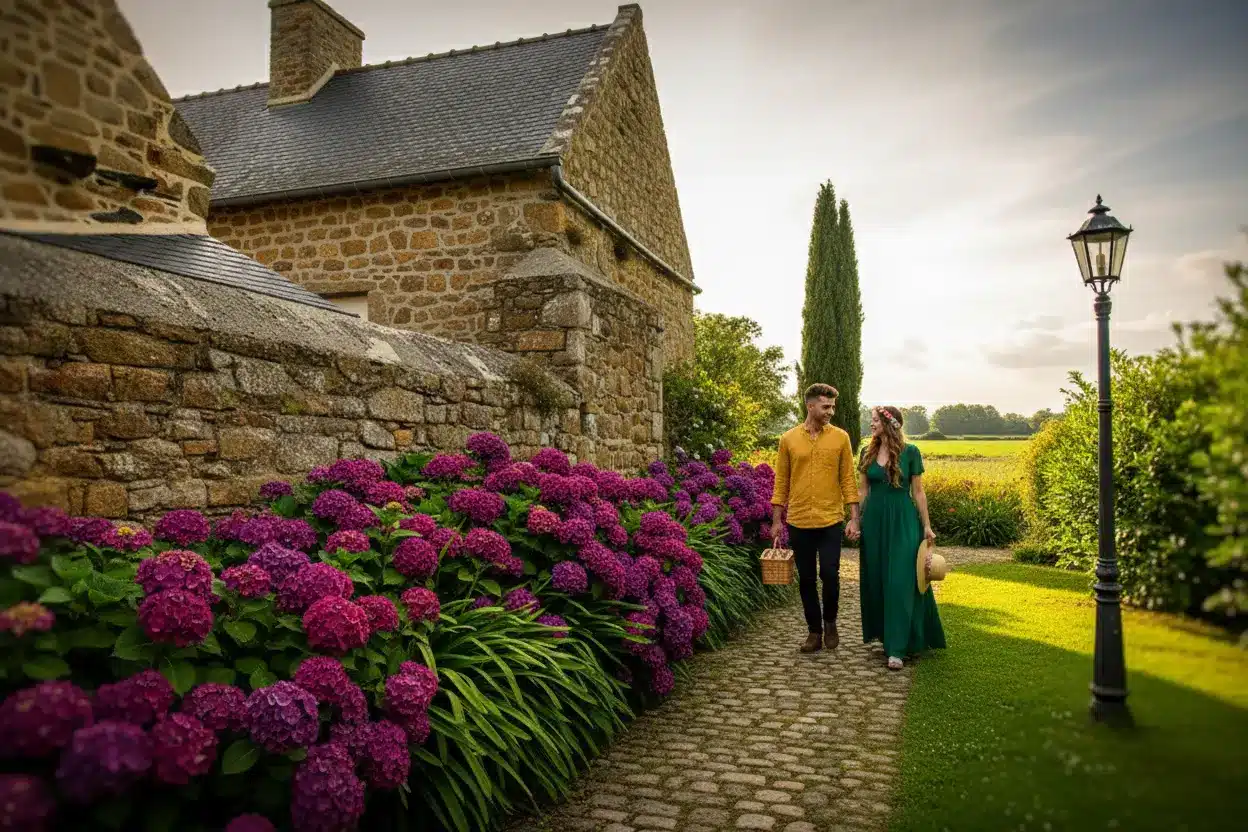Tired of plain garden borders? Let agapanthus sweep in and unveil the elegance your backyard has only dreamed of! You won’t believe how a single plant (with a name that literally means “flower of love”) can transform the character and color of your outdoor space—almost as if by magic, but with more petals and less wand.
The Journey of the « Flower of Love »
The agapanthus carries a name as poetic as its appearance. Taken from ancient Greek, it means “flower of love.” Quite the romantic touch for a plant, don’t you think? These stunning blooms, belonging to the lily family, first traveled from the distant shores of South Africa. Dutch navigators discovered them in the gardens of the Cape of Good Hope and introduced them to Europe in the seventeenth century. Originally endemic to South African landscapes and gardens, agapanthus has adapted splendidly to Western Europe. It was even an Englishman who, inspired by their beauty, developed the first hybrids in his Headbourne garden, lending his own garden’s name to these fine plants.
In certain regions, especially the south and Brittany, agapanthus thrives. Visit the gardens of Île de Batz in Finistère during July and August, and you’ll see blue and white agapanthus bursting into bloom, completely transforming the landscape. Their hues blend seamlessly with the sky, the ocean, and the classic white homes with blue shutters—talk about Instagram-worthy harmony!
Garden Design: One Plant, Endless Impact
Agapanthus doesn’t settle for being a wallflower. Its foliage alone is a show-stopper, offering long, glossy green leaves in lush bouquets. These frame tall stems crowned with striking umbels of blue, mauve, or white flowers—many reaching over 20 cm in diameter. The result is a spectacular silhouette perfect for dressing up the back of a border. Sometimes agapanthus creates impressive, tall edges, or stands out as the star of a terrace in a generously sized pot. The clumps become lusher every year, evolving into stunning standalone displays with dozens of umbels all summer long.
Pairing agapanthus is an art form all its own. These beauties enjoy the company of plants that share their preferences. Some standout companions include:
- Common sage
- Perovskia, with their blue-mauve spikes
- Rich purple-pink phlox
- Pale pink or creamy white roses
The visual effect? A collective that highlights everyone’s best features—think of it as the ultimate garden squad.
Sun, Soil, and Smart Choices: Growing Agapanthus Anywhere
If you want happy agapanthus, keep them away from the shade of trees or shrubs—these plants love sun and warmth. Agapanthus tends to be a bit sensitive to frost, so they’re especially prolific in gardens with mild winters. But here’s the good news: since agapanthus grows just as well in pots, you can add their elegance to any garden—just be prepared to give them shelter if winter suddenly gets harsh.
Breeders have come to the rescue, developing hardier varieties fit for colder climates. There are two main types:
- Evergreen in winter: These are less hardy, though some can handle a bit of frost.
- Deciduous: Losing their leaves at the end of autumn, these are downright tough when it comes to cold spells.
Non-hardy agapanthus (up to -4°C) are best for mild climates or sheltered winter pots. This includes the classic Agapanthus umbellatus, and if you’re tight on space, the dwarf variety ‘Peter Pan’ (only 50 cm tall) fits the bill perfectly. Moderately hardy types, such as those from the species A. praecox orientalis, can take brief chills (down to -8°C) with a little protection or strategic placement. ‘Dr Brouwer’ is a perennial favorite, and ‘Rosewarne’ will knock your socks off with sky-blue inflorescences measuring a massive 30 cm across!
The ultimate frost defiers, though, are the famous ‘Headbourne’ hybrid group. These champions handle open planting across entire regions, shrugging off frost as low as -20°C. Classic blue or white agapanthus from this group, standing 70 cm to 1 m tall, bloom in July or August. Whatever your garden’s exposure or winter temperament, just choose the variety that best suits your space. The reward? Beautiful flowers that return year after year, painting you a patch of blue sky all summer long.
Takeaway: A Garden of Love, Color, and Simplicity
Agapanthus might just have the secret formula for easy elegance: bold flowers, lush foliage, and adaptable personalities (who wouldn’t want a guest like that in their garden?). Pick your cultivar thoughtfully, give them sun, and watch them turn your patch of earth into a canvas of love and light. Why settle for ordinary when you can have a bit of garden magic—straight from South Africa, via the poetic charm of “the flower of love”?

John is a curious mind who loves to write about diverse topics. Passionate about sharing his thoughts and perspectives, he enjoys sparking conversations and encouraging discovery. For him, every subject is an invitation to discuss and learn.






